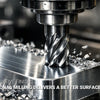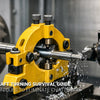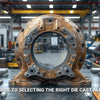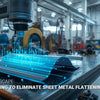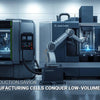Anodizing vs Powder Coating: Which Surface Finish Saves You More Money?
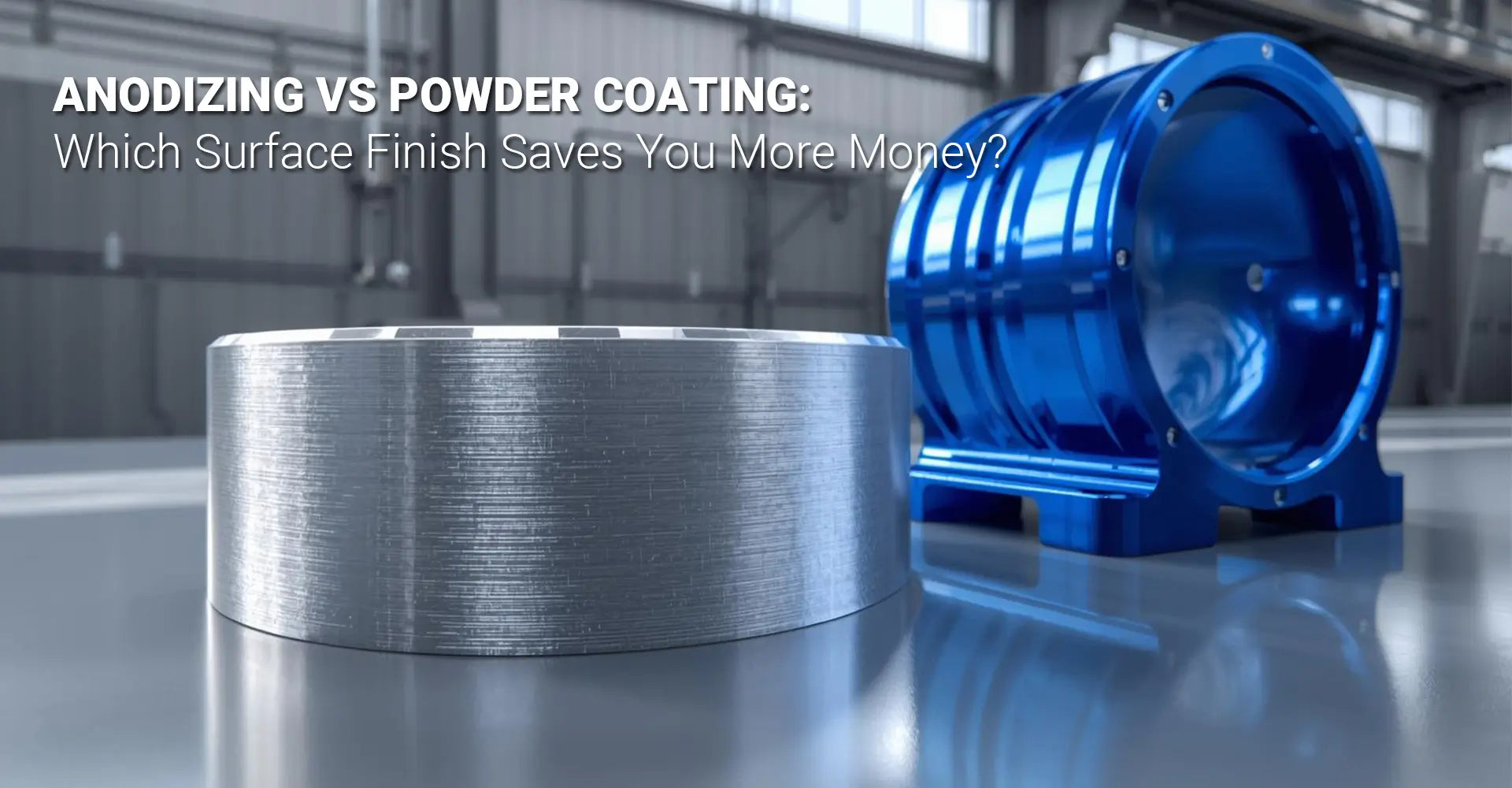
Anodizing vs Powder Coating: Which Surface Finish Saves You More Money?

Choosing the right surface finish for your metal parts can feel overwhelming. Therefore, you're standing at a crossroads between two popular options: anodizing and powder coating. Both promise protection and visual appeal, but which one actually delivers better value for your specific project? Moreover, the wrong choice could cost you thousands in rework or premature part failure.
Quick Answer: At-a-Glance Comparison
| Factor | Powder Coating | Anodizing |
|---|---|---|
| Cost Range | $1-$5 per square foot | $5-$15 per square foot |
| Best For | Colorful projects, steel parts | Wear resistance, aluminum only |
| Durability Type | Impact resistant, flexible | Scratch resistant, ceramic-hard |
| Material Options | Most metals (steel, aluminum, zinc) | Aluminum, titanium, magnesium only |
| Color Choices | Extensive palette, any color | Limited metallic tones |
| Application | Cost-sensitive batches | High-wear applications |
Bottom Line: Powder coating wins on versatility and upfront cost, while anodizing excels at durability and corrosion resistance for aluminum parts.
Understanding the anodizing vs powder coating cost debate goes beyond just comparing price tags. Additionally, factors like material compatibility, durability requirements, and aesthetic goals all play crucial roles in your decision. Consequently, this guide breaks down everything you need to know to make an informed choice that saves you money in both the short and long term.
Table of Contents
- What Makes Anodizing Different From Powder Coating?
- How Much Does Each Process Actually Cost?
- Which Finish Lasts Longer in Real-World Conditions?
- Can You Use Both Methods on Any Metal Type?
- Conclusion
1. What Makes Anodizing Different From Powder Coating?
The core difference between these two surface finish methods lies in how they protect your metal parts. While both create a protective barrier, they achieve this goal through completely different processes.
The Process Breakdown
Anodizing transforms the surface of the metal itself through an electrochemical reaction. Essentially, the metal becomes part of the protective layer rather than having something added on top. In contrast, powder coating applies a separate protective layer that sits on the metal surface like a shield.
Here's what happens in each process:
- Anodizing: Metal parts sit in an acid bath while electric current passes through, creating a hard oxide layer that grows from the base metal
- Powder Coating: Electrically charged powder particles stick to the metal surface, then bake in an oven to form a solid coating
- Key Difference: Anodized finishes cannot peel or flake because they're integrated into the metal structure
Why This Difference Matters
The fundamental process difference affects everything from appearance to performance. First, because anodizing converts the metal surface itself, it maintains the metallic look and feel of the base material. Furthermore, this integrated structure means the finish won't chip off if the part gets scratched. On the other hand, powder coating creates a completely new surface that can display any color or texture you want, though it may chip if damaged.
When you're working with CNC machining service components, understanding these process differences helps you specify the right finish from the start. Moreover, this knowledge prevents costly mistakes during production planning.
2. How Much Does Each Process Actually Cost?
Let's talk numbers. After all, the powder coating cost per part versus anodizing expenses often becomes the deciding factor for many manufacturers.
Upfront Investment Comparison
Powder coating typically requires less initial investment in equipment and setup. Therefore, many small to medium-sized operations find it more accessible. However, this doesn't automatically make it the cheaper option for every project.
Cost Breakdown:
- Initial Setup: Powder coating systems cost $10,000-$50,000 | Anodizing tanks cost $50,000-$200,000
- Per Part Application: Powder coating ranges from $3-$8 per part | Anodizing runs $8-$20 per part
- Volume Impact: Powder coating costs drop significantly with larger batches (economies of scale)
- Maintenance Expenses: Anodizing requires chemical replenishment | Powder coating needs booth cleaning and powder recycling
Hidden Costs That Impact Your Budget
The advertised price per part tells only part of the story. In addition, several hidden factors affect your total investment:
Preparation Work: Both processes require thorough cleaning, but anodizing demands more stringent surface preparation. Consequently, prep costs can add 20-30% to your total aluminum anodizing expenses.
Rework Rates: Powder coating rework is relatively straightforward because you can strip and recoat parts. However, anodizing defects often require complete part replacement since the process changes the metal itself.
Lifecycle Value: While anodizing costs more upfront, it rarely needs maintenance or refinishing. In contrast, powder coated parts may require touch-ups or recoating after 5-10 years in harsh environments. Therefore, calculating lifetime cost reveals a different picture than initial price comparisons suggest.
Energy Consumption: Powder coating ovens consume significant electricity during curing. Meanwhile, anodizing uses substantial electrical current during the electrochemical process. Depending on your local energy rates, this can shift cost advantages.
For medium-volume production runs (500-5000 parts annually), powder coating typically offers 30-40% cost savings. Nevertheless, high-volume operations producing tens of thousands of parts may find anodizing more economical over a 10-year product lifecycle.
3. Which Finish Lasts Longer in Real-World Conditions?
Durability isn't a simple comparison because each finish excels in different ways. Therefore, understanding anodizing durability vs powder coating requires looking at specific performance characteristics.
Comparing Hardness and Wear Resistance
Anodized surfaces rank among the hardest finishes available for metal parts. Specifically, hardcoat anodizing approaches the hardness of sapphire on the Mohs scale. As a result, these surfaces resist scratching and abrasion exceptionally well.
Performance Metrics:
- Scratch Resistance: Anodizing wins decisively (8-9 on Mohs hardness scale vs 3-4 for powder coating)
- Impact Resistance: Powder coating excels because its flexible layer absorbs shocks without cracking
- Abrasion Tolerance: Anodizing maintains appearance even with repeated friction
- Chip Resistance: Powder coating's thicker layer (2-8 mils) provides better protection against chips than anodizing's thinner layer (0.1-3 mils)
When comparing anodizing vs powder coating wear resistance, consider how the part will be used. For example, parts that slide against other surfaces benefit from anodizing's hardness. Conversely, parts subject to drops or impacts need powder coating's flexibility.

Corrosion Protection in Different Environments
The question of anodizing vs powder coating corrosion resistance depends heavily on your operating environment. Furthermore, both methods can fail if improperly applied or maintained.
Anodizing's Corrosion Advantages:
First, the oxide layer bonds molecularly with the base metal. Consequently, it cannot peel or separate, even if scratched. Additionally, anodized surfaces naturally seal microscopic pores, creating a barrier against moisture and chemicals. Moreover, saltwater environments rarely damage properly anodized aluminum.
Powder Coating's Protection Strategy:
Powder coating creates a complete barrier between the metal and its environment. Therefore, as long as the coating remains intact, corrosion cannot start. However, any chip or scratch that exposes bare metal creates a potential corrosion site. Subsequently, corrosion can spread underneath the coating through a process called undercutting.
For anodizing vs powder coating for outdoor use, both perform admirably with proper application. Nevertheless, coastal environments with salt spray favor anodizing because scratches don't compromise the entire protective layer. Meanwhile, powder coating works beautifully in urban outdoor settings where impact damage poses a greater risk than chemical exposure.
UV Stability Comparison:
Sunlight degrades many finishes over time. However, anodized finishes naturally resist UV damage because they're inorganic. In contrast, powder coating formulations must include UV stabilizers to prevent fading and chalking. Premium powder coatings with proper UV protection match or exceed anodized finishes in color retention.
4. Can You Use Both Methods on Any Metal Type?
Material compatibility often makes the decision for you. In fact, asking whether anodized vs powder coat aluminum works better assumes you're working with aluminum in the first place.
Material Restrictions for Each Process
Anodizing works only on specific metals that form protective oxide layers. Therefore, your material choice might eliminate anodizing as an option entirely.
Anodizing Compatibility:
- ✅ Works Well: Aluminum alloys (5000, 6000, 7000 series), titanium, magnesium, zinc
- ❌ Does NOT Work: Steel, stainless steel, iron, brass, copper
- ⚠️ Limited Results: Some aluminum alloys (2000, 4000 series) produce inconsistent colors
Powder Coating Compatibility:
- ✅ Works Well: Steel, stainless steel, aluminum, zinc-plated metals, galvanized steel
- ✅ Also Works: Some plastics and composites with special primers
- ⚠️ Requires Prep: Cast iron, bronze (need aggressive surface preparation)
How Material Choice Affects Your Options
When you're deciding how to choose between anodizing and powder coating, start by identifying your substrate material. For instance, if you're working with steel components, powder coating becomes your only option between these two methods.
Color and Appearance Limitations:
The discussion around powder coating color options vs anodizing reveals another material-related consideration. Anodizing produces colors by either dyeing the porous oxide layer or using the interference effects of different oxide thicknesses. Consequently, you're limited to:
- Clear/natural aluminum (silver)
- Black, bronze, gold (common dye colors)
- Red, blue, green (less stable, limited availability)
- All colors maintain metallic appearance
Meanwhile, powder coating offers virtually unlimited color choices because the coating itself contains the pigment. As a result, you can achieve:
- Any RAL, Pantone, or custom color
- Matte, gloss, semi-gloss, or textured finishes
- Metallic effects, candy colors, color-shifting finishes
- Completely opaque coverage that hides the base metal
Thickness Considerations:
Understanding powder coating thickness vs anodizing helps you design parts correctly. Anodizing grows into the base metal while also building up on the surface. Therefore, a 2-mil anodized coating only adds about 1 mil to the part dimension. In contrast, powder coating sits entirely on top of the metal, so a 3-mil coating adds the full 3 mils to your part dimensions.
This difference matters for precision-machined parts with tight tolerances. Furthermore, threaded holes, press-fit features, and mating surfaces require special attention when specifying powder coating thickness.
5. Conclusion
Choosing between anodizing and powder coating ultimately depends on your specific project requirements rather than one method being universally superior. Throughout this guide, we've explored how each finish excels in different scenarios.
Choose anodizing when you need:
- Maximum wear resistance and scratch protection
- Superior corrosion resistance without thickness buildup
- Metallic appearance that maintains the look of aluminum
- Parts that will experience constant friction or abrasion
- Aluminum, titanium, or magnesium components
Choose powder coating when you need:
- Vibrant colors or specific color matching
- Cost-effective finishing for medium to large batches
- Excellent impact and chip resistance
- Versatility to coat steel, aluminum, and other metals
- Thicker protective barrier against environmental exposure
Remember, both methods deliver excellent protection when properly applied. Therefore, focus on matching the finish characteristics to your application requirements rather than searching for a universally "best" option. Additionally, working with experienced finishing partners ensures you get quality results regardless of which method you choose.
For projects requiring the highest quality surface finishing alongside precision manufacturing, consider partnering with suppliers who offer both options and can guide you toward the right solution for your specific needs.
Recommended Resources
[anodizing vs powder coating cost][^1]
[powder coating cost per part][^2]
[anodized vs powder coat aluminum][^3]
[anodizing vs powder coating for outdoor use][^4]
---
[^1]: Understanding the cost differences can help you make informed decisions for your project.
[^2]: Knowing the cost per part can assist in budgeting for your manufacturing needs.
[^3]: Understanding the differences can help you choose the best finish for your aluminum projects.
[^4]: Explore this link to learn which coating offers better durability and protection for outdoor applications.

